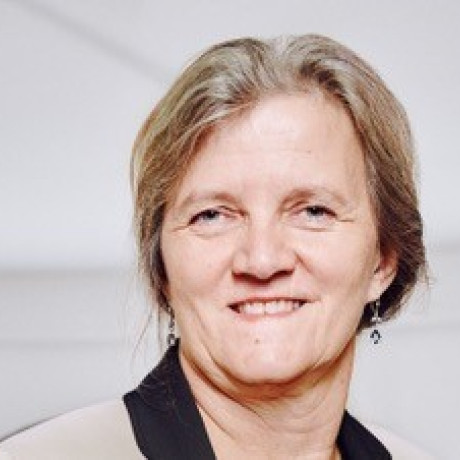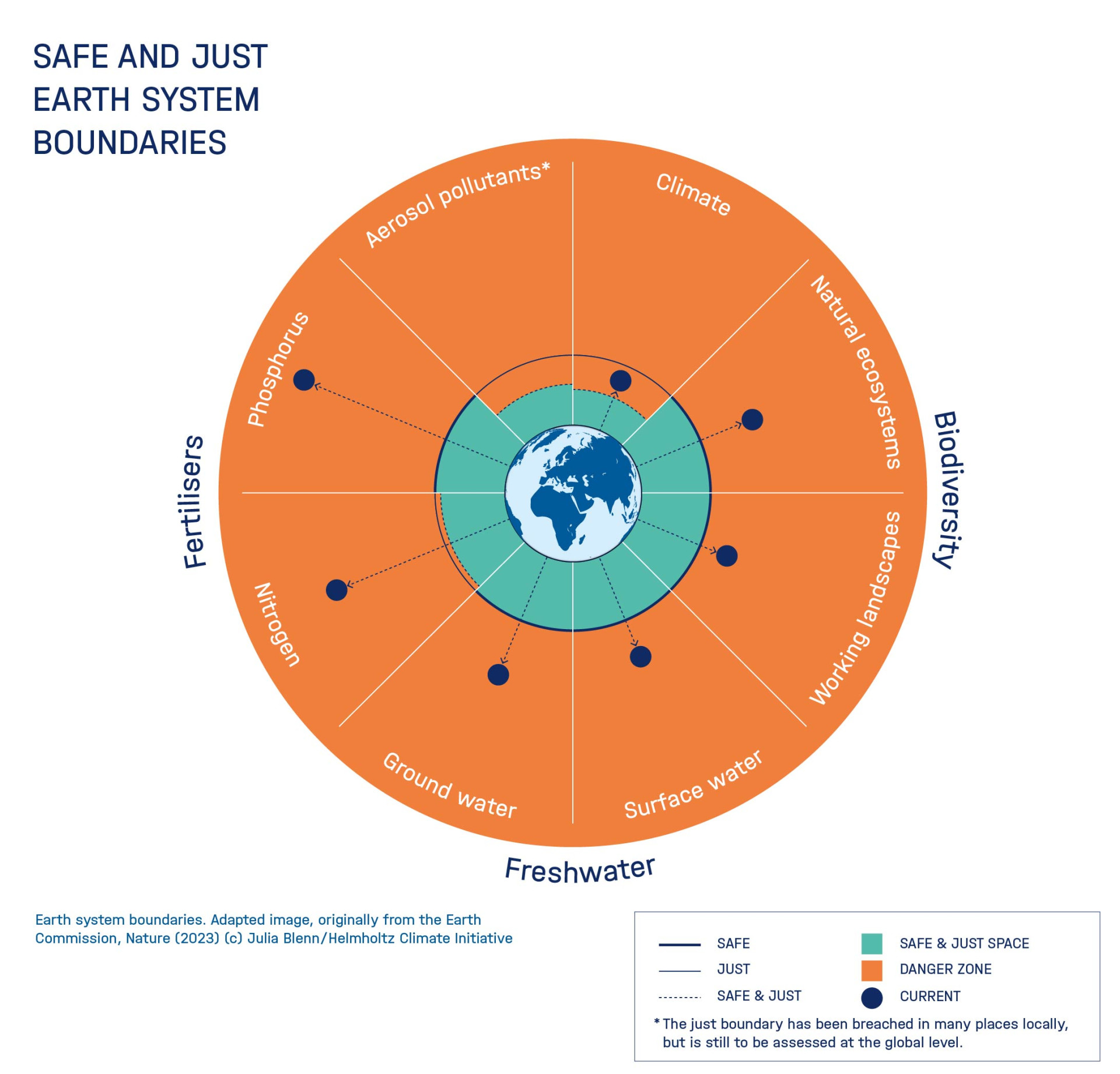Planetary boundaries: With justice it gets even tighter
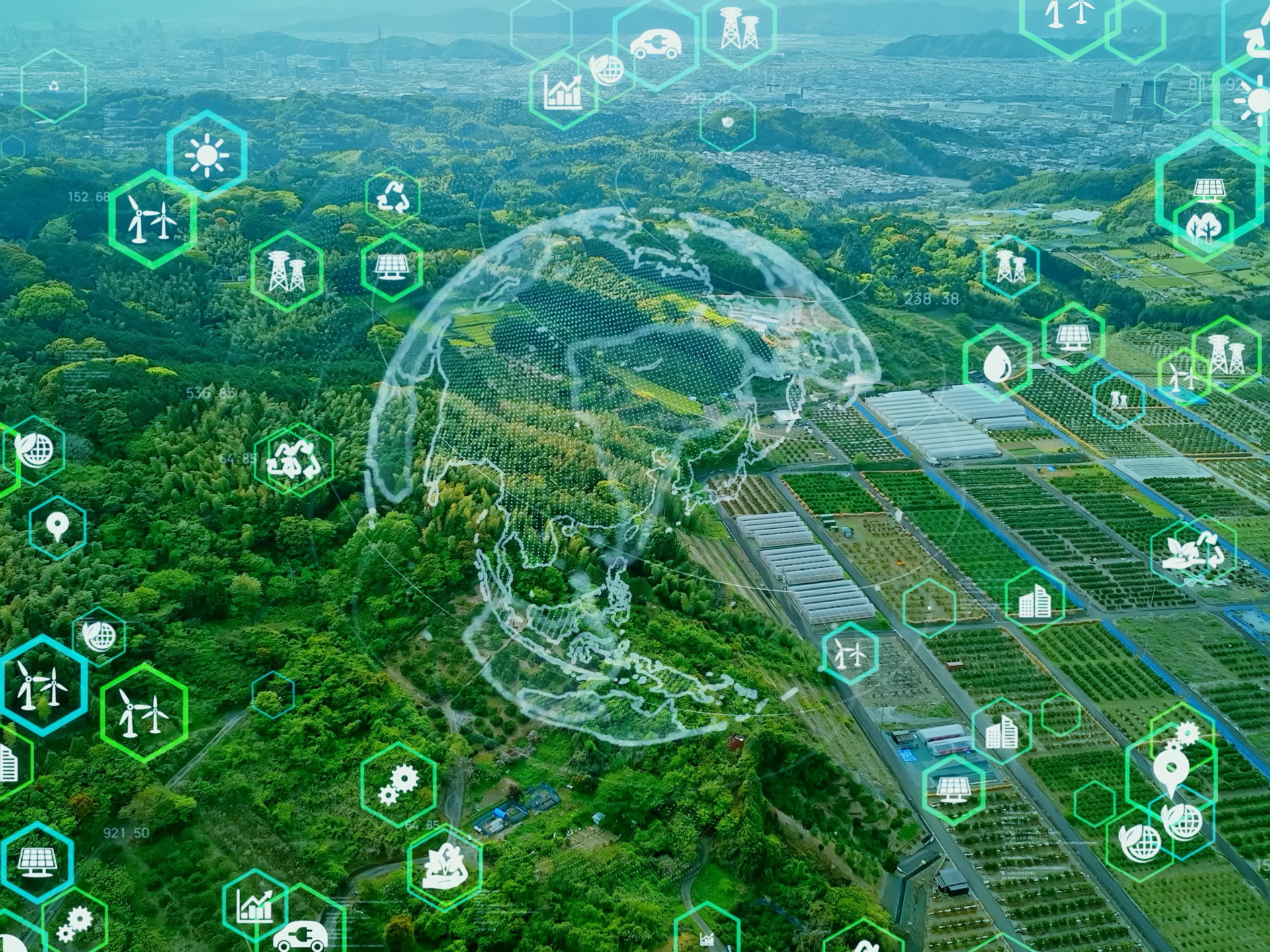
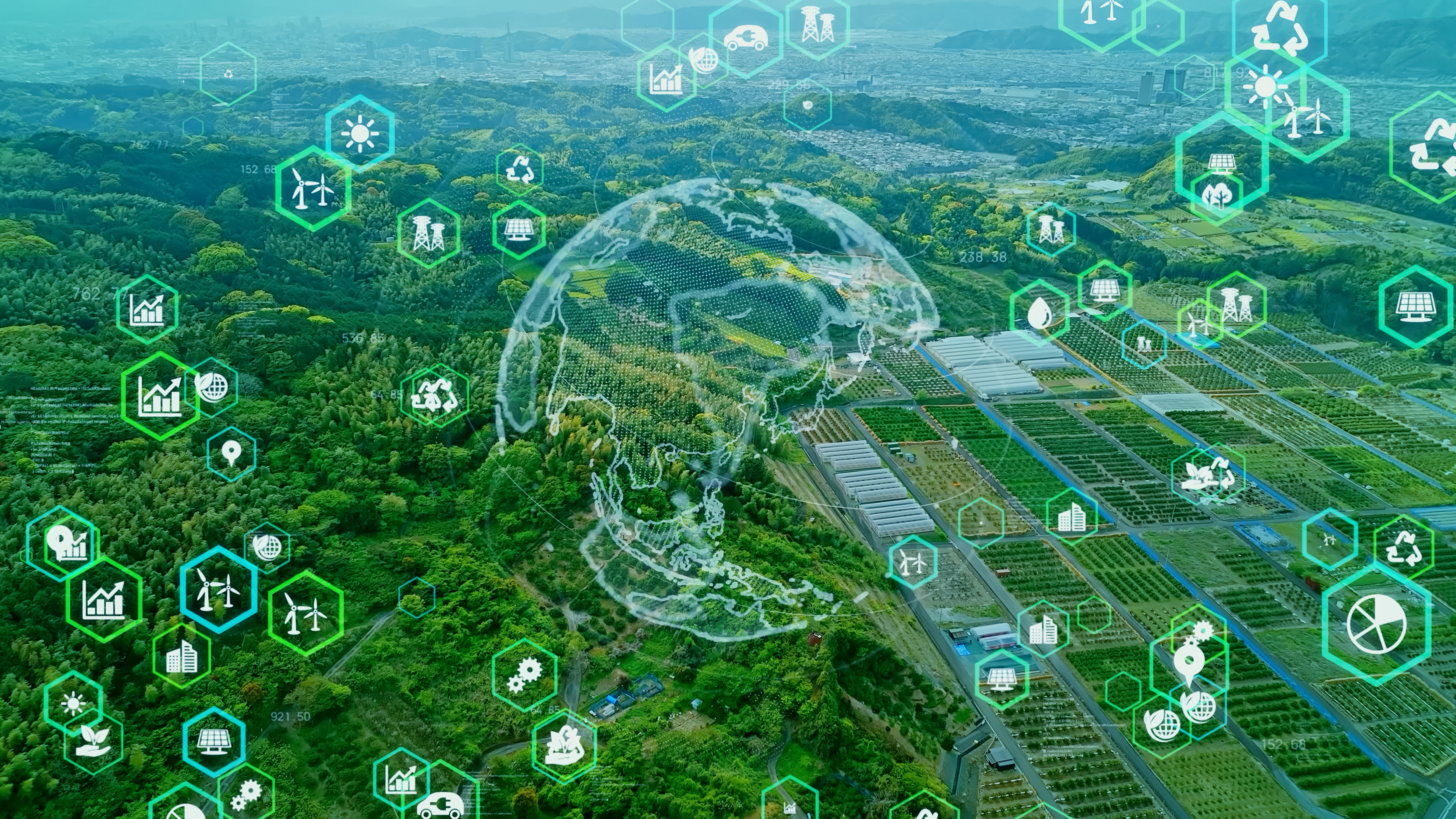
With its increasingly negative impact on the environment, humankind is endangering its own safe life on Earth. According to a recent study, seven of the eight boundaries of the earth's regulatory capacity have already been crossed. According to researchers, a just global transformation is urgently required in order to safeguard human well-being on the planet.
In 2009, the Swedish resilience researcher Johan Rockström developed the concept of planetary boundaries. The concept defines the nine physical, chemical and environmental boundaries of the Earth system that must be maintained if the basis for human life is to be preserved. The Helmholtz Climate Initiative has presented all nine boundaries in a series of articles. Together with an international research team, Rockström has now developed the concept further in a recent study in the journal Nature.
New aspect of justice
For the first time, researchers are now differentiating between the safe boundaries and the just boundaries of the Earth system. According to the authors, the safe boundaries ensure that the Earth system remains stable and resilient, maintaining its ability to support the life of humans and other organisms. These boundaries are mainly based on the biophysical tipping points of the Earth system.
The just boundaries integrate socio-political factors: How can we ensure that humans use the available resources fairly now and in the future and will not be inequitably affected by changes or shortages? Three forms of justice are considered here: justice towards other forms of life and ecosystems, justice towards the future generations and justice towards current generation of people, regardless of where and how they live.
These boundaries primarily aim to protect people from significant harm. Significant harm is defined as “severe existential or irreversible negative impacts on individuals, communities and countries from Earth system change.” This includes, for example, the loss of human life, livelihood or income, displacement, loss of food and water or food security.
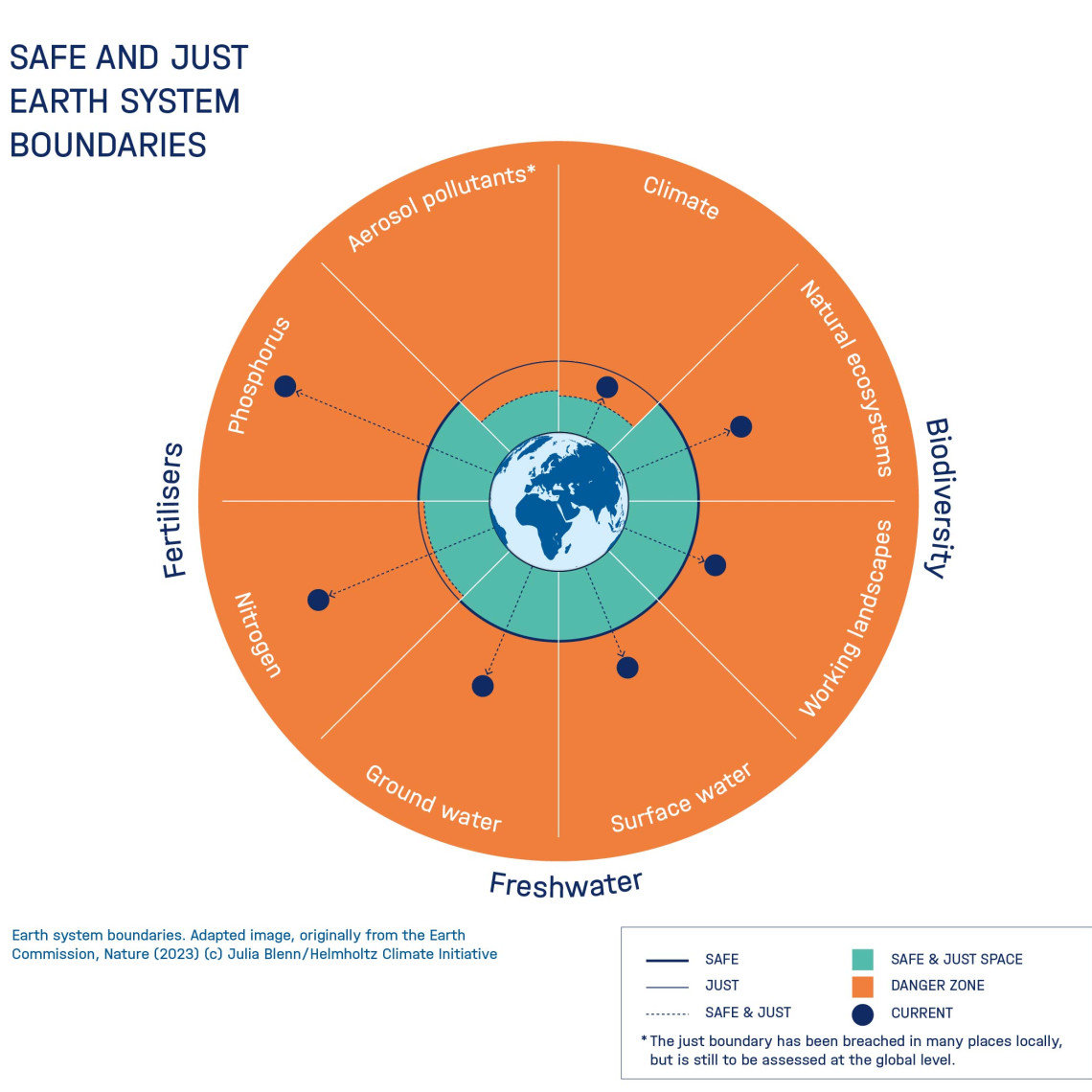
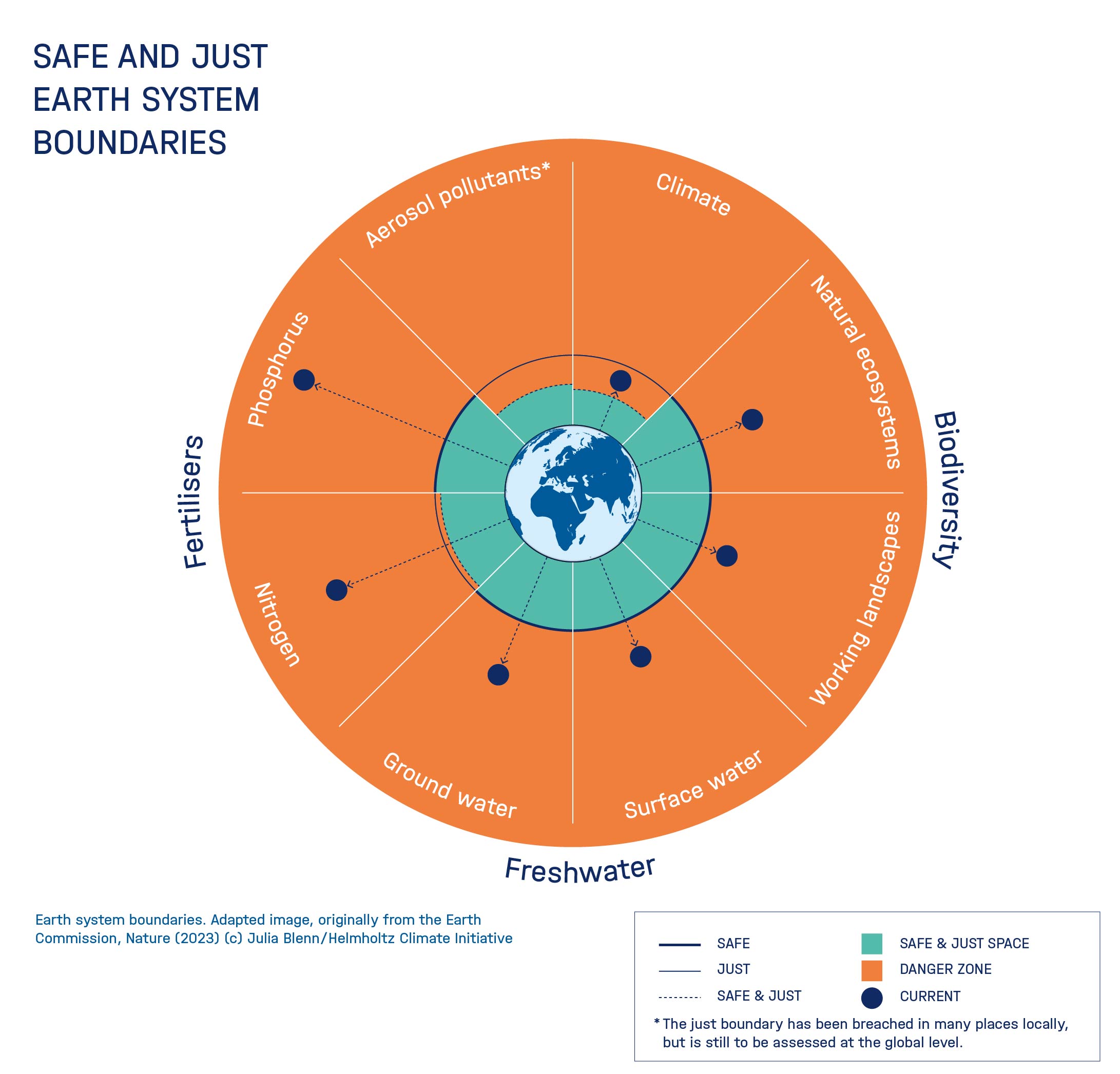
Adding the aspect of justice leads to stricter planetary boundaries. For example, in the Paris Climate Agreement, the global community agreed to pursue efforts to limit global warming to 1.5 degrees Celsius above pre-industrial levels. This goal limits the worst impact on humans and ecosystems, but does not prevent severe harm to millions of people who could lose their livelihoods due to rising sea levels and temperatures. For this reason, the authors propose setting a safe and just climate limit at one degree of global warming or less.
Seven of eight boundaries crossed
According to the study, seven of the eight safe and just boundaries of the Earth system globally have already been crossed. This puts the livelihoods of today's and future generations at risk. Atmospheric aerosol loading is the only boundary that has not yet been crossed globally.
The safe and just boundaries of the Earth system on a global level as proposed by the authors, and their status quo:
- Climate: The safe and just climate boundary is at one degree Celsius of global warming above the pre-industrial level. Currently at around 1.2 degrees Celsius, it has already been crossed.
- Biosphere: Two boundaries were defined here: 1) 50 to 60 percent of land surface on the earth must be kept natural or restored to ensure that ecosystems can function properly. The boundary has been crossed: the current share is only 45 to 50 percent. 2) 20 to 25 percent of every square kilometer on Earth, including agricultural and urban areas, must be covered with natural vegetation. This currently applies to only one-third of the earth's land area, meaning that this boundary has also been crossed.
- Water: Two boundaries were defined here: 1) When it comes to surface water (rivers and lakes), the worldwide water level may only fluctuate by about 20 percent of the water volume. This is only the case for approximately 70 percent of the world’s surface water. 2) Only as much groundwater may be extracted as can be added back. This boundary is currently crossed on 47 percent of the global land surface.
- Nutrient cycles: Two boundaries were defined here for the loading of soils and bodies of water with nitrogen and phosphorus, which enter into the earth and water systems via artificial fertilizers. Both boundaries have been crossed.
- Atmosphere: The only boundary that has not been crossed globally is loading the atmosphere with aerosols. However, the local boundaries have already been crossed in many places around the world.
To safeguard human well-being, researchers are calling for a just global transformation across all sectors. “Such transformations must be systemic across energy, food, urban and other sectors, addressing the economic, technological, political and other drivers of Earth system change, and ensure access for the poor through reductions and reallocation of resource use,” indicated the study authors.
Daniela Jacob, Scientific Director of the Mitigation Cluster at the Helmholtz Climate Initiative and Director of the Climate Service Center Germany (GERICS), has praised the researchers’ approach to the Science Media Center: “This way of taking natural and human systems into account as a whole in order to avoid the greatest possible harm and enable resilient development is a crucial step towards a just global transformation and is in line with the statements of the IPCC regarding ‘climate resilient development’.” It is “an excellent concept for developing options for action in the various regions, nations and sectors that follow this method,” said Jacob, “and a clear call to action.”
Expertise
